At the end of the fifth century BC, which all textbooks consider the crowning glory of antiquity, the most famous of the ancient Greek city-states, Athens, was dealt a devastating blow. It was actually two blows: war and plague. The war was clearly a long overdue and almost inevitable clash between the two mainland Greek rivals, Athens and Sparta. The plague, on the other hand, is much less clear, even though both events are told to us by the same (and very thorough!) historian, Thucydides. The debate about what specific kind of disease it was has been going on for two and a half thousand years, and it doesn’t really look like we have any answers anyway!
For most people, if they could focus their view of antiquity, an era that lasted more than a thousand years, on a single point, the most likely point would be Athens in the fifth century BC. The city-state that defeated the Persian Empire and staved off the threat from Europe. The city of the great playwrights Aeschylus, Sophocles, Euripides, and Aristophanes, whose plays are still performed today, having spawned countless imitations and variations. The city of the great physician Hippocrates, the revered philosophers Socrates and Plato, and the famous sculptor Phidias. The city of the majestic temple to the virgin Athena, the Parthenon. The city of the first direct democratic government in history.i

The Parthenon. The 5th century BC. Scenes of ancient Athens. Liebig collectors' card. 1933/Alamy
You are a fool if you have not seen Athens;
You are a donkey if you have seen it and have not rejoiced;
You are a camel if you have left it without complaining.
However, in the last decades of the fifth century, this era came to an end. There were two reasons for this: war and plague. Athens could not do without war: the habit of ‘free living’ was already ingrained in the flesh and blood of the Athenians. One can achieve a high degree of comfort through hard work, but Athenians did not like and did not want sweat on their brows. All work, except military service, was the domain of slaves, non-citizens, and other people from the lower classes. This meant that it was necessary to seek wealth through war and war booty. It made no sense to go to war with Persia again: the Spartans, the eternal enemies of the Athenians, would immediately attack them from the rear. Therefore, it was necessary to go to war with Sparta itself.
Over the course of the previous century, small and flexible associations of small Greek city-states, each with its own rules, traditions, dialect, and even calendars, coalesced into two powerful military-political alliances. Athens was at the head of one, and Sparta at the head of the other. The outstanding politician Pericles, considered by most citizens to be the best of the Athenians, delayed the war as long as he could, but the time had come. As the famous Russian scholar Mikhail Gasparov writes in his book for young adults The Amazing Greece, that Pericles ‘had a plan—a reliable one, but one that required a lot of nerve. Sparta was stronger on land, Athens on the sea. It made sense to refuse any land skirmishes, but instead to gather all the people inside the city walls and withstand the siege, using supplies from the sea to feed them. It was impossible to cut Athens off from the sea: it was connected to the harbor by impregnable walls. Meanwhile, the Athenian fleet would surround the Peloponnesus,i
The large population of the area around Athens, Attica, had flocked to the city, and the surrounding farmlands and pastures had been left to the ravages of the Spartans and their allies. And it was in this environment of overcrowding, poverty, malnutrition, and the stress of war that an epidemic broke out.
The epidemic is known to us from a single report. But this report is detailed, direct, and clear. It belongs to Thucydides, the first historian in the European tradition who did not recount entertaining tales about distant lands,i

Thucydides Mosaic from Jerash, Jordan, Roman, 3rd century CE at the Pergamon Museum in Berlin/Wikimedia Commons
‘No one could recall such a calamity,’ begins Thucydides. The doctors were as puzzled as everyone else. First, they had never seen anything like it; second, they were visiting the sick, and the mortality rate among the doctors themselves was higher than average because of it. Here and in several other places, Thucydides explicitly says that the disease was transmitted from person to person. This seems obvious to us now, but in medical science, a clear idea of the mechanism of contagion was very slow to emerge. If doctors had read Thucydides more carefully, there is no doubt that the history of medicine would have been very different.

“ Eight bookes of the Peloponnesian Warre” written by Thucydides the sonne of Olorus. Interpreted by Thomas Hobbes. Published in 1629/Houghton Library, Harvard University/Wikimedia Commons
The disease was said to have originated in Ethiopia and traveled through Egypt, Libya, and Persia. In Athens, it first affected the inhabitants of the satellite port city of Piraeus, but soon reached the ‘upper city’ as well. Perfectly healthy people suddenly suffered a sharp fever, their eyes became inflamed and red, their throat and tongue were covered with bloody plaque, and their breath smelled disgusting. Then the patient would sneeze, wheeze, and the pain would go down to the chest and cause coughing. This was followed by an upset stomach and all sorts of bile eruptions—especially burping without vomiting and sharp cramps—some of which lasted, while the others soon ceased. Their temperature did not rise much, and the skin became reddish-yellow, the body covered with small blisters and ulcers.i
The vultures and scavengers either did not touch the corpses or died after eating the infected flesh, and soon, the kites disappeared from around Athens. The corpses piled up in the streets; people forgot all decency, seeing that neither a righteous life nor the invocation of the gods had any effect on the chances of survival or the course of the disease.
When the Athenian commander Hagnon took his army to besiege the city of Potidaea (on the westernmost of the three peninsulas called Chalcidice), the same disease broke out in his army, and of 4,000 soldiers, more than 1,000 died within a month or so. Another important medical observation made by Thucydides was that those who recovered could not be reinfected (he says ‘at least they did not die’, but this is probably just careful wording). This is another indication of how medically competent his description was—the awareness of a phenomenon such as acquired immunity was still many centuries away.
The epidemic (which Thucydides calls Λοιμὸς τῶν Ἀθηνῶν, usually translated as ‘the plague of Athens’) returned to the city several more times, but not with such deadly consequences. Perhaps the old Pericles died of it, and while Thucydides does not mention it, the moralist biographer Plutarch, writing 500 years later, notes that Pericles’s two legitimate sons, his sister, and many other family members and close friends died of the same disease. Thucydides observes, however, that many people remembered the ominous prophecy, which, as usual, was formulated in a single verse: ‘There will be a Doric war, and there will be a plague with it.’ However, it was debated whether the word was really plague (loimos) or famine (limos). Thucydides suggests that if there had been another war accompanied by famine instead of a plague, people would have attributed the cause to famine instead of plague.
When Thucydides begins to describe the symptoms of the disease, he carelessly remarks that he himself has suffered from it and tells the story in such detail so that future generations might recognize it if it were to reappear anywhere. Did he achieve his noble goal?
From the time of the Peloponnesian War to the present day, the puzzle posed by Thucydides has kept historians and physicians busy. A large part of the problem, not only in this case, but in many others, is that philologists and historians are poorly versed in medicine, and medical professionals are poorly versed in history and ancient Greek. Many works on the ‘Athenian plague’ are littered with apologies of one sort or another, references to benevolent colleagues who explained something medical to philologists or something philological to physicians, or—probably the best possible but rare option—they are explored and understood by philologists and physicians together. The number of candidate diseases for this epidemic is enormous, but let’s look at the main ones along with the objections that make each version highly unlikely.
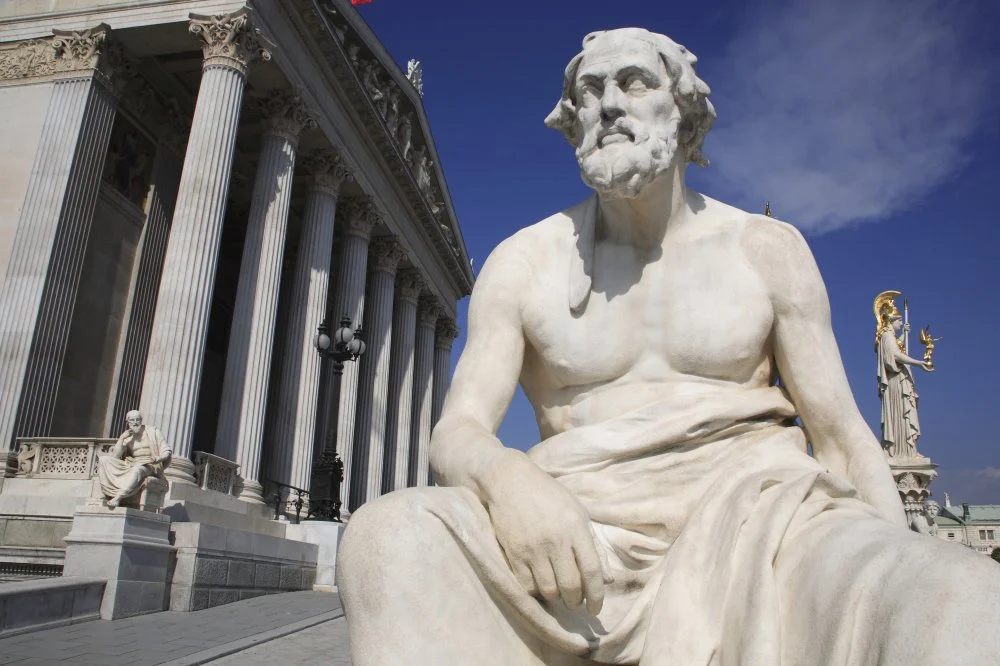
Austria, Vienna, Statue of Thucydides the Greek philosopher in front of Parliament building/Getty Images
Smallpox
Some of the objections to smallpox as an “Athenian plague” are rather irrelevant: the smallpox virus only affects humans, while Thucydides mentions dogs getting infected and dying from nibbling on the dead.i
But perhaps this is an exaggeration. Smallpox gives very reliable immunity against new cases,i
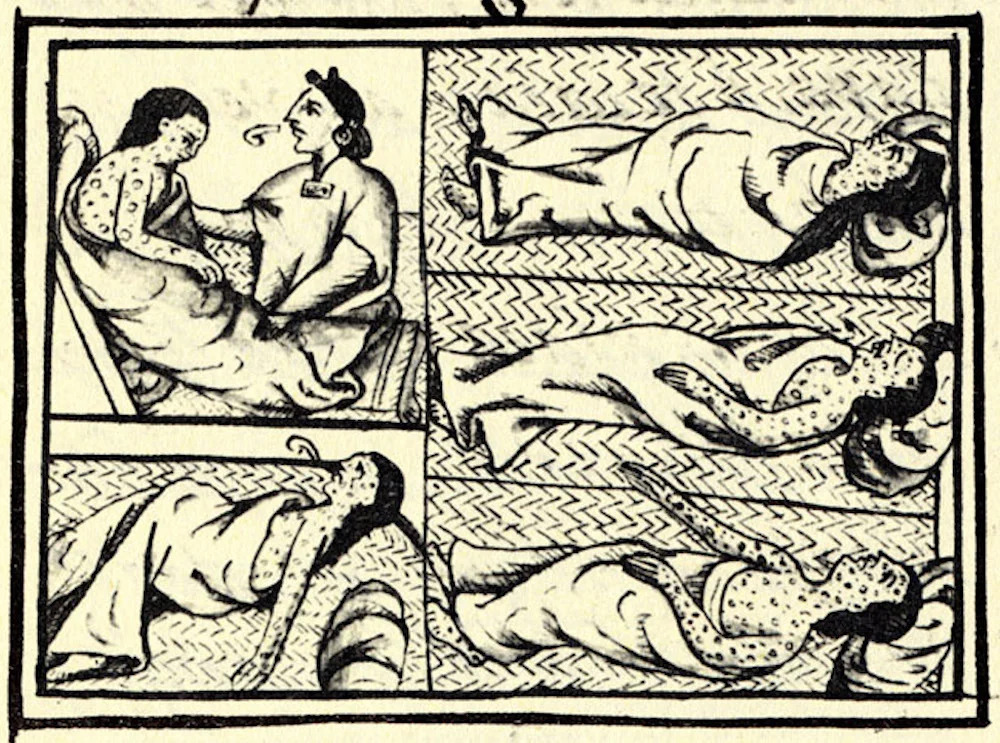
Panel from the Florentine Cortex (1540-1585) depicting smallpox outbreaks in the Americas during the 16th century/Wikimedia Commons
Bubonic plague
The description of the symptoms of the disease bears little resemblance to the plague. Perhaps most importantly, Thucydides does not mention the buboes that gave the disease its name — inflamed lymph nodes (mainly in the groin and under the arms). Some philologists have suggested that the word elkos Thucydides uses refers to buboes, but it is a very, very long stretch; in a play by the Athenian playwright Menander, a farmer complains of a bubo in his groin and an elkos — a wound, abrasion, cut — on his leg from a blow with a shovel, at the same time. It is hard to imagine Thucydides being so careless in his use of the word. Moreover, rats — the main carriers of fleas — do not appear to have been present in ancient Greece. Bubonic plague is transmitted by flea bites, not from person to person; pneumonic plague, which is even more deadly and contagious, tends to affect people much more quickly than Thucydides describes.
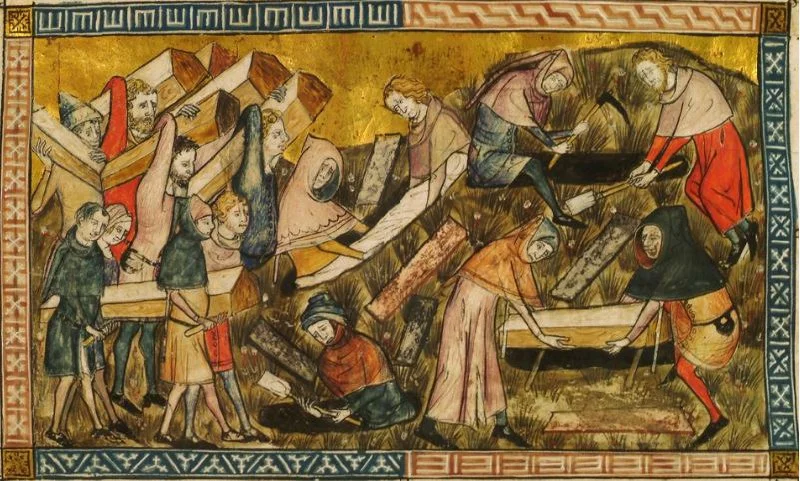
The burial of the victims of the plague in Tournai. Miniature Pierart dou Tielt from: Tractatus quartus by Gilles de Muisit/Bibliothèque royale de Belgique/Wikimedia Commons
Scarlet fever
Affects only humans (not animals); current mortality from iti
Measles
The mortality rate from measles in 20th century Europe was much lower than that described by Thucydides; however, the ancient version of measles may have been more deadly. Measles is accompanied by symptoms such as fever, photophobia, and a different type of rash than the Athenians had. One of the most persistent arguments in favor of measles is based on evidence of an 1875 epidemic on the island of Fiji, where patients with fever threw themselves into the sea, roughly the same behavior reported by Thucydides. There are many objections to this testimony: the Fiji epidemic was not studied by doctors in real time; the natives there threw themselves into the ocean when they had any kind of fever (often contracting pneumonia as well); there are many well-documented measles epidemics where nothing like this ever happened.

Measles, Rubeola vulgaris and R. nigra from John Wilkes' 'Encyclopedia Londinensis,' 1822/ Getty Images
Typhus
One of the popular versions is that it is very similar to typhus: many similar symptoms plus high lethality of the disease. At the same time, this version has a lot of objections. A sudden appearance and equally sudden disappearance of epidemic typhus that no one in the area had ever heard of before is an unlikely event; typhus typically creeps slowly in circles around the same area for centuries. The skin manifestations described by Thucydides do not resemble those of typhus; nor does Thucydides speak of the confusion that gave the disease its namei
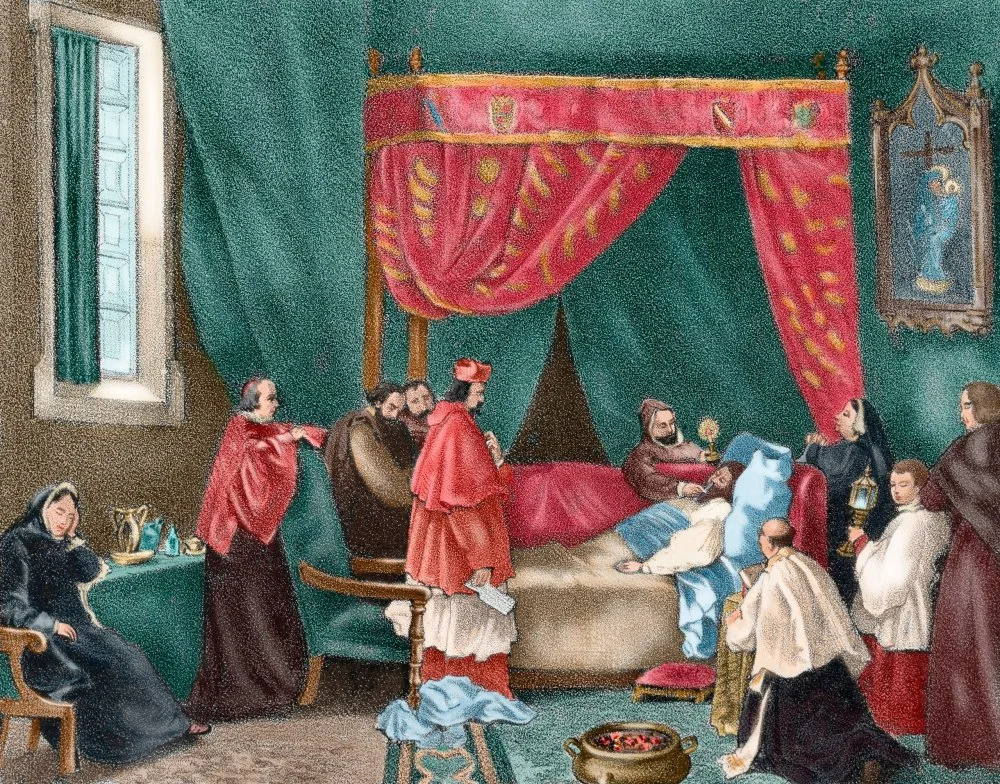
Death of John of Austria (1547-1578) by tiphus. Engraving by Rafael Castillo from 'Historia de España Iustrada', 1871/Getty Images
Typhoid fever
The typhoid version is highly questionable. Typhoid fever can only spread rapidly through a population if there is a water system shared by the entire population.i

Sir Almroth Edward Wright developed the first effective typhoid vaccine circa 1900/Wikimedia Commons
Ergotism
This is poisoning by the alkaloids of ergot.i


There were many other explanations: cerebrospinal meningitis, influenza, dengue fever, syphilis, even Ebola... And none quite fit the description.

Matthias Grünewald “The Temptation of St. Anthony” 1512-1516/Isenheim Altarpiece, Colmar, France/Wikimedia Commons
For the 2004 Olympic Games, Athens was undergoing massive construction. During work on a new subway station, a large mass grave was discovered; bodies were piled up near the ancient Athenian cemetery “Kerameikos” (it was once a pottery district, hence our word “ceramics”), there were about one hundred and fifty of them, clearly dumped as they were. Archaeologists working on the find (later completely destroyed during construction) reported that the burial dated to 430 BC, the time of the Plague of Athens (an unprecedented accuracy in archaeological matters), and that DNA analysis of the pulp of three teeth from three different skeletons showed the presence of typhoid fever — although the bacterium found was somewhat different from modern variants. Archaeologists and microbiologists had many complaints about this study: according to experts, it was conducted too carelessly and too hastily, after which the story with this study disappeared from the pages of both popular publications and scientific journals. By the way, the construction of the metro station was first stopped, then resumed, and in 2007 the Kerameikos station was finally opened.
Perhaps the best approach to the problem of the Plague of Athens was articulated by A.J. Holladay (a classical philologist) and J.C.F. Poole (a medical scholar) in a 1979 article.
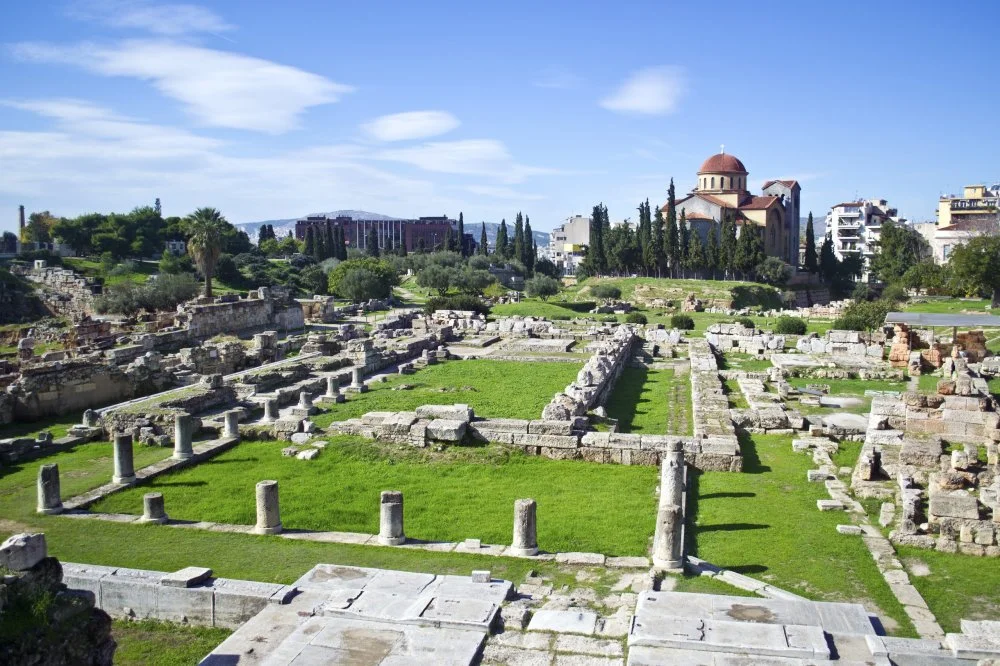
The ancient cemetery of Athens in Kerameikos/Shutterstock
These scholars asked the question: Was Thucydides’ plague the disease we know today? They came up with four versions of the answer.
1. Yes, it was. In this case, Thucydides described it carelessly and incorrectly; we can never know the truth.
2. Yes, it was, but the disease is so rare that it still exists only in some remote areas. This version seemed to be extremely unlikely even in 1979, and today it is a complete impossibility.
3. No, this pathogen and its associated disease are extinct.
4. The nature of the pathogen and the associated symptoms have evolved so much since then that it is impossible to recognize them from Thucydides’ description.
The authors insist that we are dealing with a third or fourth option, and it is not possible to choose between them.
What to read
Mikhail Gasparov. The Amazing Greece. Moscow, NLO, 1995.i
The Landmark Thucydides: A Comprehensive Guide to the Peloponnesian War. Touchstone, 1998.
